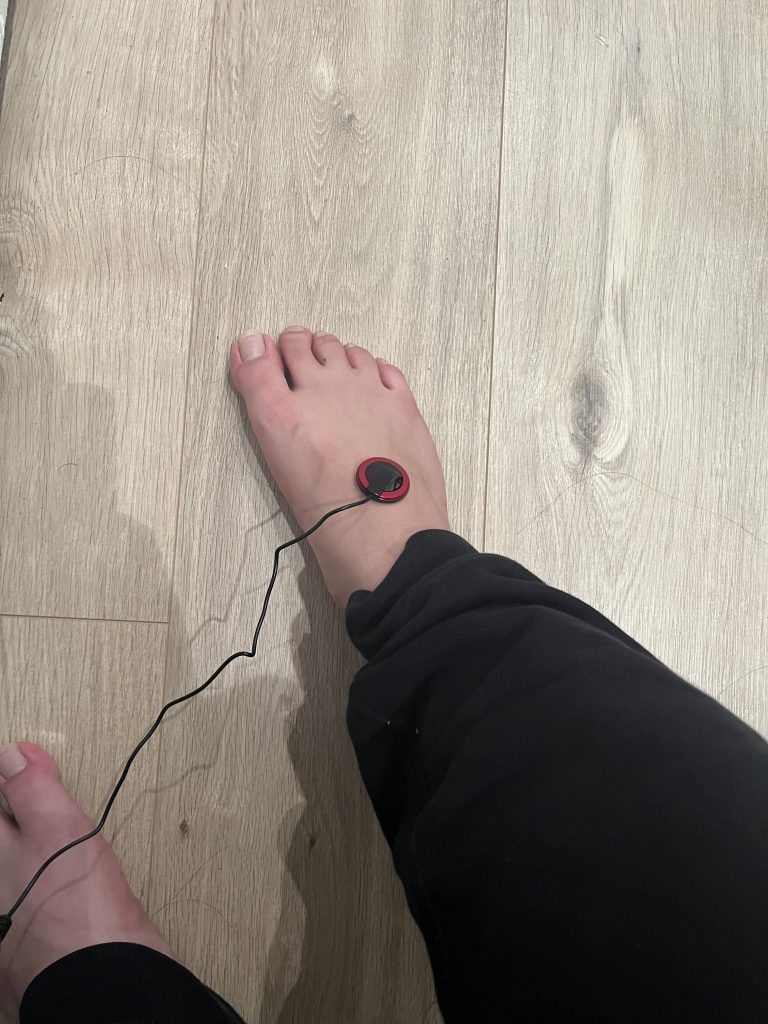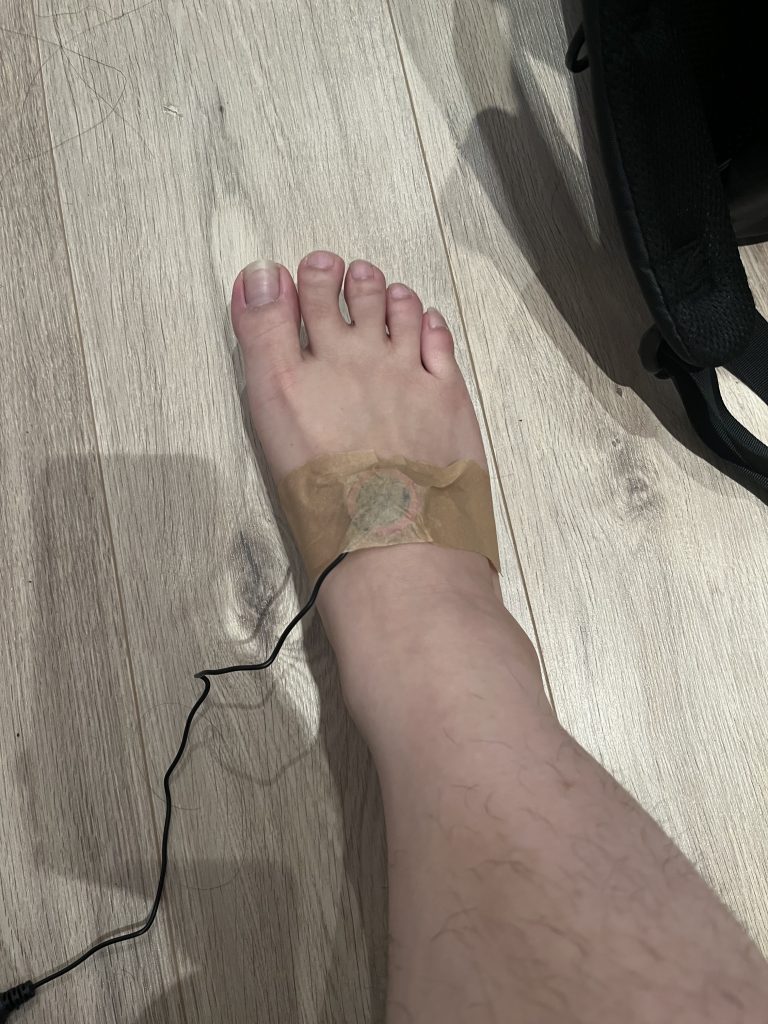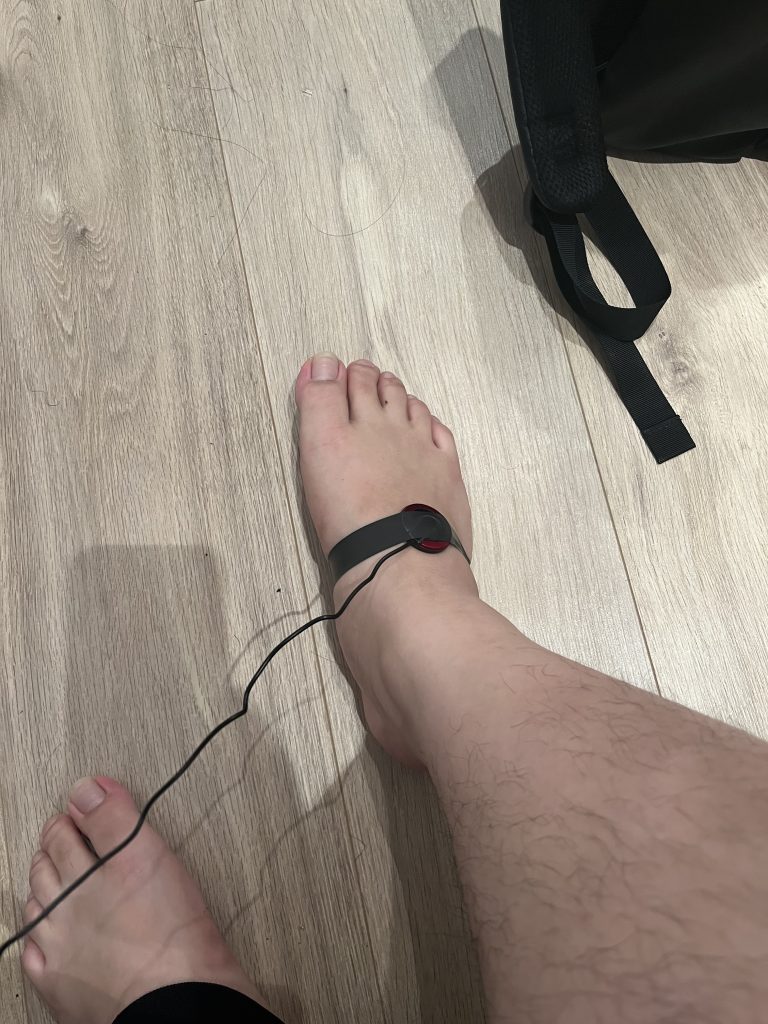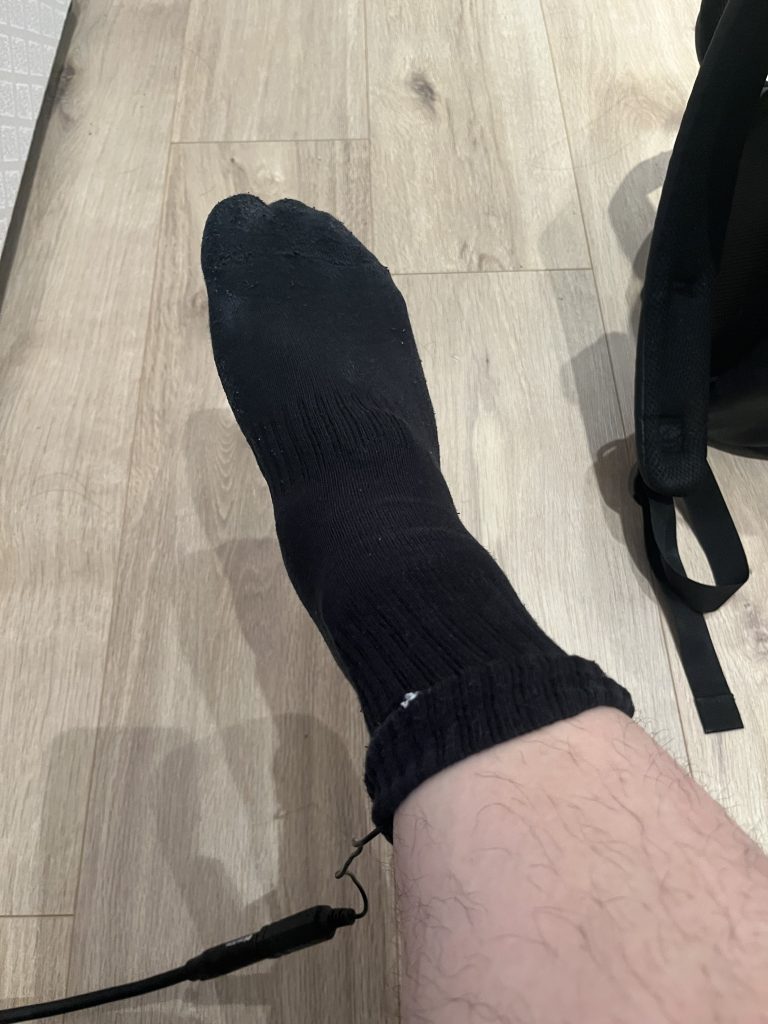Before proceeding with the actual filming, I need to find a reliable method to accurately capture the sound of walking. The first method I considered was using a contact microphone. Since this microphone captures vibrations transmitted through the object it’s attached to, it seemed like a promising way to record walking sounds. Moreover, because it focuses solely on the vibrations from the contact surface, it picks up very little ambient noise compared to other microphones — which is another advantage.

So, I first experimented by attaching the contact microphone to the top of my foot using the double-sided tape that came with the mic.
After listening to the recording, I was quite disappointed. Most of the vibrations produced while walking consist of low-frequency sounds, and piezo microphones are not particularly suited for capturing those frequencies. Piezo mics are more responsive to mid-to-high frequencies, so a Geofon microphone might be more appropriate for capturing low-end vibrations. However, since I need to record all four feet (each foot of two people), I would require four microphones, and the cost of four Geofon mics is beyond my budget. Therefore, I decided to first explore what could be achieved with the piezo mic I had.

The first step was to secure the microphone more firmly. I suspected that the noise was caused by the double-sided tape failing to hold the mic securely, causing it to detach and reattach slightly with each step — generating noise that the mic picked up directly. So, I used tape to attach the mic more securely to the top of my foot.
Unfortunately, the result was similar or even worse. The tape itself now produced noise as it detached and reattached while walking, and the mic picked that up as well.

Next, I tried using electrical insulation tape, which doesn’t rustle and holds things tightly in place.
The noise level noticeably decreased, but when I raised the mic input level to capture the walking sounds more clearly, the noise became overwhelming again, rendering the effort ineffective. Upon further research, I learned that inexpensive piezo microphones lack noise protection at the cable junction, and when the cable keeps moving, the mic picks up vibrations from the connection itself, becoming a primary source of noise.

To mitigate this, I wore a sock over the setup to stabilize the cable junction as much as possible and walked again. The noise was still significant, but after applying a filter, I started to hear something resembling the sound of walking. However, the dominant noise still sounded more like suction cups detaching than actual footsteps.
For now, I plan to try two more methods: First, recording while wearing shoes; Second, attaching the microphone to the outside of the shoe while walking.
However, I suspect that using this piezo mic will continue to be challenging for clear recording, and it may also make participants uncomfortable if I involve citizens in the project. So, I explored alternative solutions.
The first alternative is a clip-on contact microphone. These are commonly used to record wind instruments and are designed with better noise isolation at the cable connection. They would also be more convenient when working with public participants. My only concern is whether they will capture walking sounds effectively. I’ve ordered one to test this possibility.
The second alternative is a clip-on condenser microphone. I had used a condenser mic in my first year to record my own footsteps, and it can capture more realistic walking sounds. However, it also picks up a lot of ambient noise, which could detract from the clarity of the footsteps. I plan to borrow one from the university next week to conduct further tests.